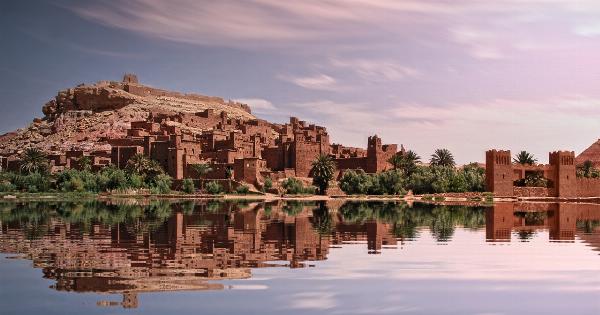Gullying detachment, also known as gully erosion, is a common geomorphic process that causes the formation of deep channels or gullies on the Earth’s surface.
It is often observed in hilly or mountainous regions, but can also occur in flat landscapes. This comprehensive guide provides an in-depth understanding of gully detachment, its causes, effects, and possible mitigation strategies.
1. What is Gullying Detachment?
Gullying detachment is a form of erosional process that occurs when surface runoff water concentrates and cuts deep channels or gullies into the soil or rock.
These channels usually have steep sides and are continuously deepened over time, leading to significant soil and land loss.
2. Causes of Gullying Detachment
Various factors contribute to the initiation and progression of gullying detachment. The main causes include:.
2.1. Intense Rainfall: Heavy or prolonged rainfall events can generate high runoff volumes, leading to increased erosive power and the formation of gullies.
2.2. Slope Steepness: Steeper slopes enhance the velocity of runoff water, causing it to erode the surface more aggressively and deepen gullies.
2.3. Vegetation Cover: Lack of vegetation or poor vegetation cover reduces the infiltration capacity of the soil and increases surface runoff, making the area more susceptible to gullying detachment.
2.4. Soil Type: Certain soil types, such as fine-grained clays or loose sandy soils, are more prone to erosion and can facilitate gullying detachment.
3. Effects of Gullying Detachment
The consequences of gullying detachment extend beyond the immediate loss of soil and land. Some notable effects include:.
3.1. Soil Erosion: Gullying detachment leads to significant loss of topsoil, which is rich in nutrients and essential for agriculture. This erosion reduces soil fertility and impacts crop productivity.
3.2. Sedimentation: The eroded soil and sediment from gully erosion often end up in nearby water bodies, causing sedimentation. This can lead to water pollution, reduced water quality, and adverse effects on aquatic ecosystems.
3.3. Land Degradation: As gullies expand and multiply, they fragment the landscape, making it unusable for agriculture, construction, or other human activities.
This results in significant land degradation and loss of habitat for plants and animals.
3.4. Flooding: Deep gullies can alter the natural drainage patterns, increasing the risk of flooding in downstream areas during heavy rainfall events.
4. Mitigation Strategies for Gullying Detachment
To minimize the impact of gullying detachment, several mitigation strategies can be implemented:.
4.1. Terracing: Constructing terraces or bench terraces on steep slopes can slow down runoff water, reducing erosive power and preventing gully formation.
4.2. Afforestation: Planting trees and vegetation helps improve soil structure, enhances infiltration, and stabilizes slopes, thereby reducing the chances of gullying detachment.
4.3. Water Diversion: Designing and implementing proper water diversion channels or structures can redirect excess runoff away from vulnerable areas, preventing gully erosion.
4.4. Soil Conservation Practices: Implementing soil conservation practices like contour plowing, no-till farming, and cover cropping can minimize soil erosion and reduce surface runoff.
Conclusion
Gullying detachment is a significant erosional process that can have detrimental effects on soil, land, and ecosystems. Understanding the causes and consequences of gully erosion is essential for implementing effective mitigation strategies.
By employing sustainable land management practices and adopting appropriate erosion control techniques, we can minimize the impact of gullying detachment and protect our environment for future generations.





























